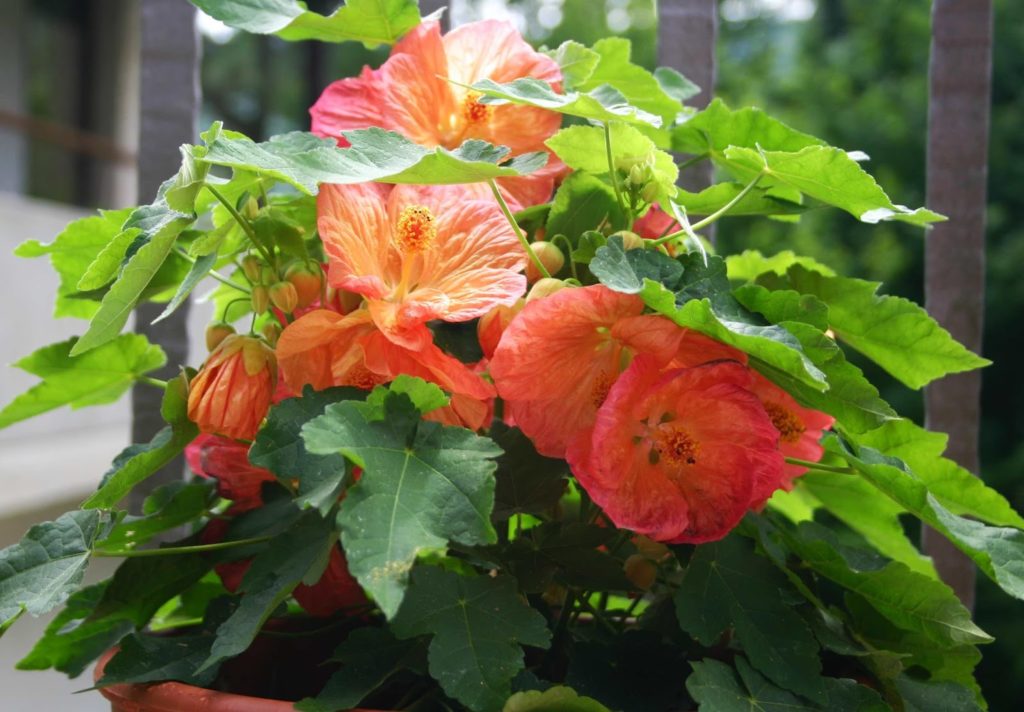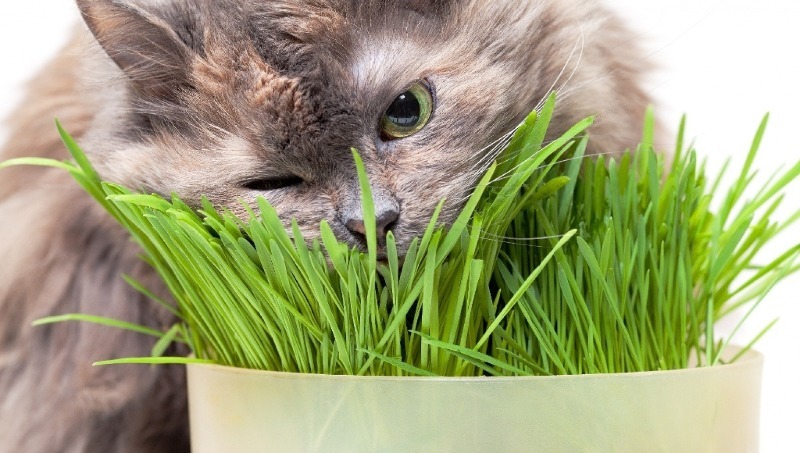Sooner or later, growers face problems associated with the deterioration of the health and decorative value of indoor plants. A depressed appearance, lethargic or yellow leaves, dropping of buds - all this indicates improper care of them. In order for home flowers to start "enjoying life" again, you need to understand the reasons for this condition and urgently eliminate them.
If the leaves wither
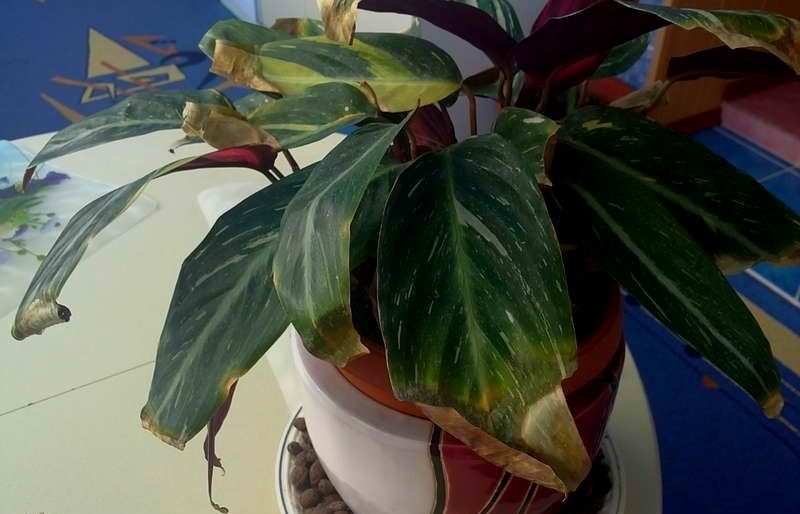
With insufficient watering, the leaves first wither, then dry up, and later the whole plant dies.
As a result of frequent watering and excess moisture, the substrate becomes acidic, the roots rot from a lack of oxygen, as a result of which the vital activity of the plant is disrupted and is manifested by the first sign - wilting of the leaves.
The reason for this may be stagnation of water in the pot with poor drainage (insufficient layer height or unsuitable material for it). No matter what substrate is used, good drainage, which is responsible for water and air permeability of the soil, effective distribution and outflow of water, is indispensable.
If rotten leaves and stems
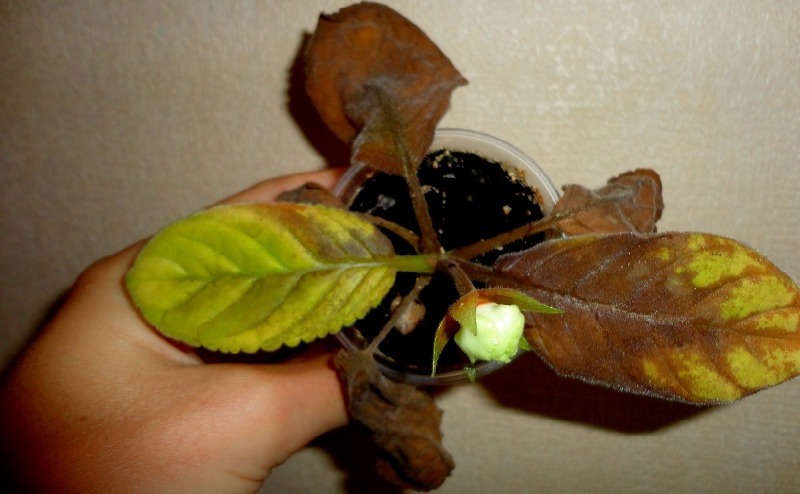
Some plants prefer abundant watering, while others, on the contrary, like more moderate soil moisture. But at different times of the year, it cannot be the same.
From about November, most indoor plants enter a dormant period. Therefore, in winter, watering is significantly reduced in comparison with the summer period; moderate moisture is sufficient for them. With excessive moisture, a healthy plant acquires an unusual color, the leaves become stained, and the stems at the base begin to rot.
In the summer, the reasons for this should be sought in various diseases:
- Gray rot (botrytis) - looks like a whitish fluffy bloom on the leaves, which subsequently becomes soft from manifestations of rot. So begonias and violets often get sick with botrytis, when their beautiful leaves begin to rot from excess moisture, especially in the cold winter time.
- Brown rot - appears on the leaves with brown-red spots, which over time actively increase in size. In this case, the plant withers and most often dies.
If the plant sheds buds
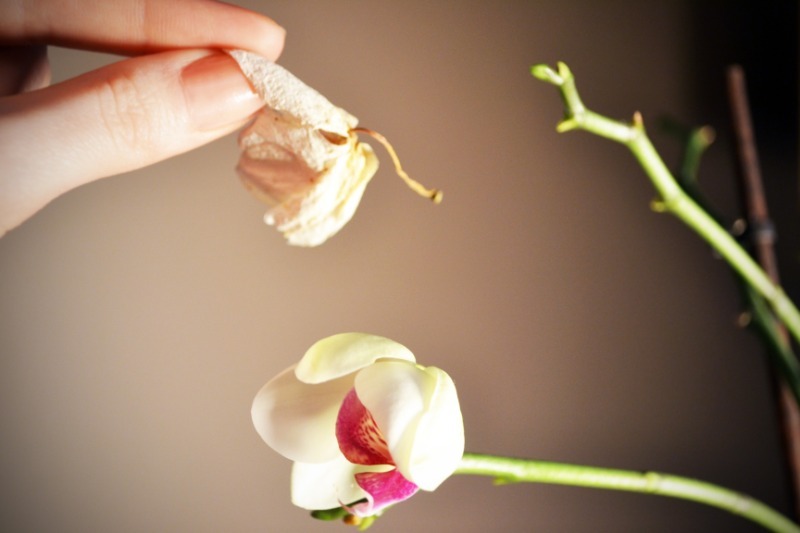
The most common cause of bud falling is improper watering or insufficient humidity in the surrounding atmosphere. There are several other factors causing this phenomenon:
- Indoor air is too dry. To increase humidity, air is sprayed around the plant. In this case, the ingress of moisture on the buds and flowers is unacceptable.
- Overdried soil in a pot due to long breaks between watering, or, conversely, too moist. It is necessary to adjust the watering mode according to the type of indoor flower.
- Insufficient lighting slows down the process of photosynthesis in the leaves, as a result of which, the indoor flower sheds its buds. Some plants, such as the house rose, stop flowering altogether.
- The presence of pests on the plant. If harmful insects appear: aphids, mealybugs, scale insects, then problems arise with the entire aerial part of the plant. Not only buds wither and fall, but flowers and leaves also begin to turn yellow, there is a total fall.
If the leaves are pale
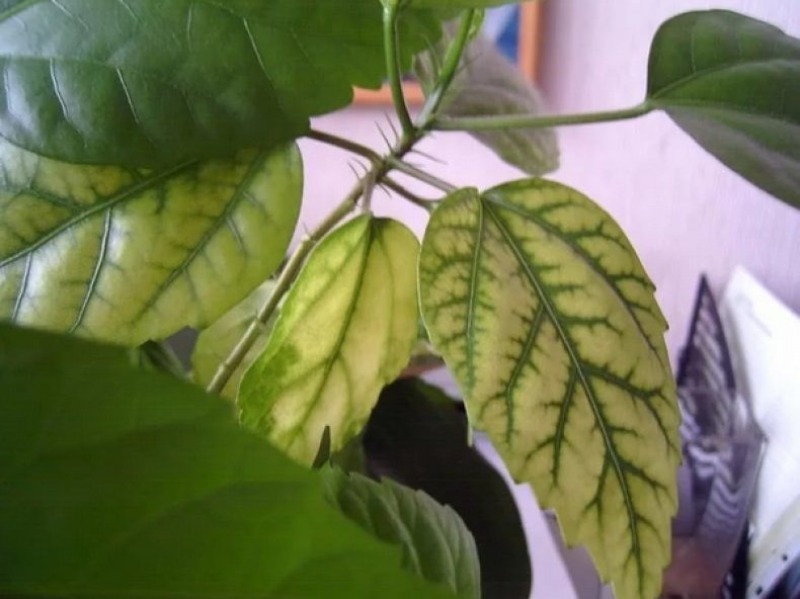
Small and pale leaves indicate that in a short period of time the plant has made a sharp jump in growth, the shoots are elongated, and the foliage has not yet managed to catch up with them. This phenomenon occurs in winter or early spring, when the apartment is too warm, the soil is sufficiently moist, and, on the contrary, there is not enough lighting.
Too weakened shoots are best removed. And if such signs appear during the period of active growth, then the plant needs additional feeding and good lighting.
If the leaves are yellow
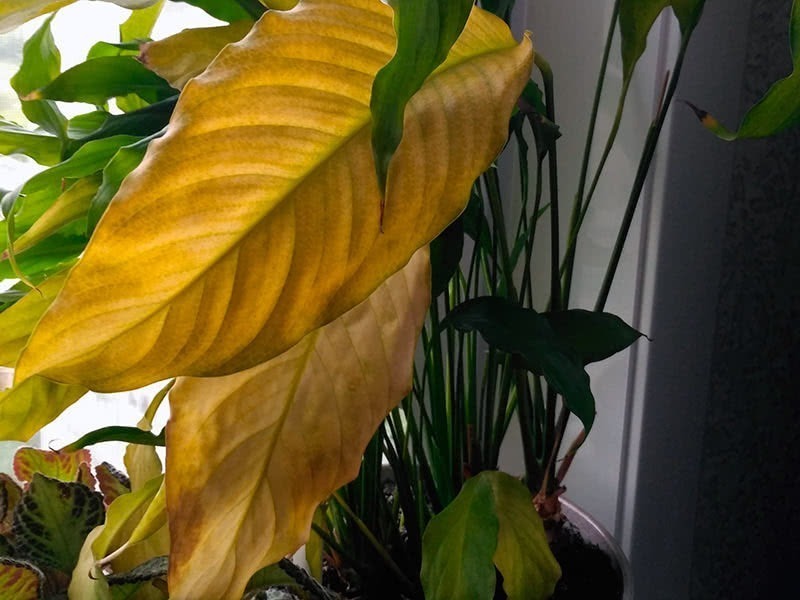
The wilting of the plant should not be confused with the natural process, which is yellowing and partial shedding of the leaves. For most indoor plants, self-removal of old foliage is part of the normal development cycle. Such plants include begonia, caladium, cyclamen, anredera, that is, those that have a full dormant period. Also, partial shedding is considered normal for camellias, coleria, jasmine and fuchsias.
If the leaves turn yellow in other plant species, then the cause may be a draft, temperature drops, or direct sunlight. Indoor flowers do not tolerate cold air currents. They are not adapted to the constant movement of air masses. If the plant is standing under an air conditioner or near a window with which the room is ventilated, it must be removed to another place.
Constant temperature changes also cause yellow foliage. It is necessary to move the flower to a place protected from temperature surges. It will take a long time for the problem to go away.
The scorching rays of the sun can damage the plant, causing burns. Yellow spots appear on the leaves. To correct the situation, it is enough to move the flower to another place.
If the plant has dry brown spots
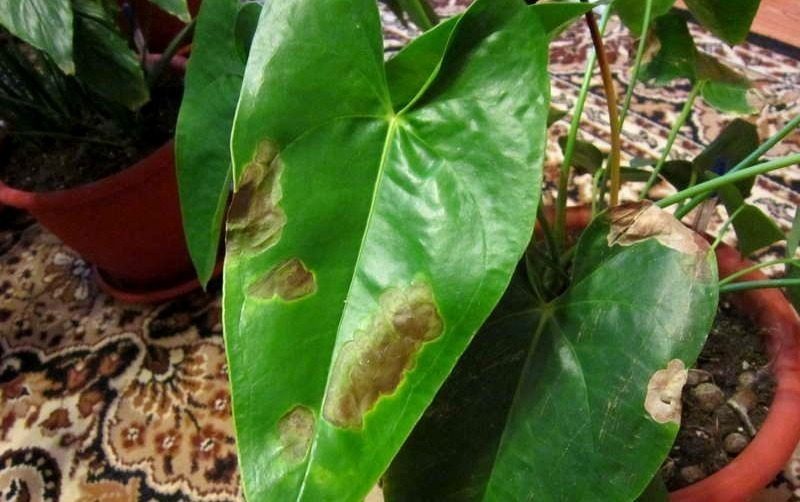
Sometimes dry brown spots appear on the plant. This damage can be caused by the following reasons:
- The flower is in a room with an excessively high temperature. It is necessary to reduce it or move it to a cooler place.
- Lack of moisture. In this case, you need to start observing the irrigation regime that is necessary for a particular plant.
- Excessive fertilization. To solve the problem, you need to transplant the flower into a new substrate. Only the recommended amount of fertilizer should be used, as well as the correct composition.
- The appearance of brown spots may be due to a lack of light. For this reason, the process of photosynthesis in the plant slows down, due to which the buds lose their ability to bloom. It is necessary to transfer the flower to the south window sill or provide artificial lighting.

